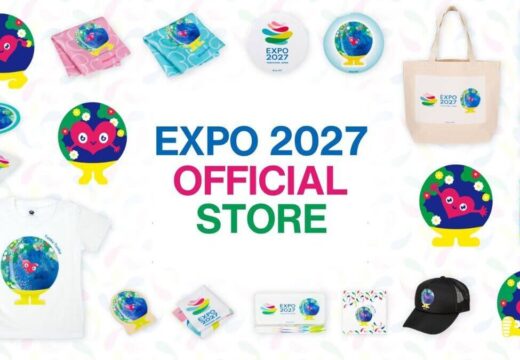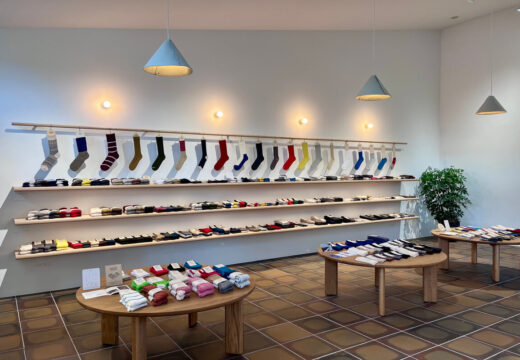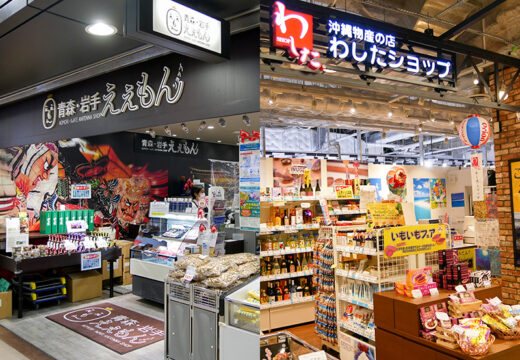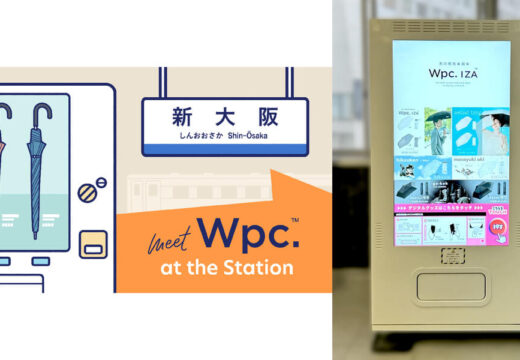Ceramic x Different Materials! Material Waves™, the Next Generation of Tableware
Category: Goods

Hello! I’m Hakoboya, the souvenir promotion captain of Kodawari Times╰(·ᴗ·)╯
In my articles, I will introduce you to the latest local products from all over Japan!
This time, I’d like to tell you about a next-generation tableware project that started in the Hokuriku region. This is a very interesting project that combines ceramics with different materials! Please be sure to read to the end!
What is Material Waves™?
NIKKO Corporation, a tableware manufacturer founded in 1908 and headquartered in Ishikawa Prefecture, Japan, has been dealing with ceramics for more than 100 years and has encountered many people and materials.
The newly launched project “Material Waves™” is a project to discover new values created by crossing ceramics (NIKKO FINE BONE CHINA) with different materials.

The name “Material Waves™” is derived from the word “Material Wave”. All materials have wave properties, and the waves that express these properties are called “material waves”. Ceramic, bamboo, metal, glass, wood… The name “NIKKO” was chosen to express the new possibilities that arise when the waves of each material are combined, and to express the hope that the waves generated by NIKKO will be transmitted one after another, eventually bringing about change in various forms.
The vibrations generated by ceramic tableware will be transformed by encounters with various materials, and new tableware of the next generation will be born. What kind of products will be created? Just imagining what kind of products will be created is exciting!
And now, as the first and second products of the project, two series of tableware, “Rinkou” and “Suzuhaku,” were released on May 23, 2024 (Thursday).
Let me introduce each product in detail.
[Ceramic & Bamboo] RINKOU product details
The first series of Material Waves™ is a collaboration between ceramics and bamboo!
“Rinkou” is the result of a cross between NIKKO FINE BONE CHINA and the bamboo art of Chifuyu Enomoto, a bamboo artisan.
The series is inspired by the contrast of light and shadow overflowing from the delicate and beautiful mesh drawn by Rinko weaving, one of the techniques of bamboo craft, and the transparency of NIKKO FINE BONE CHINA, which shines in white.
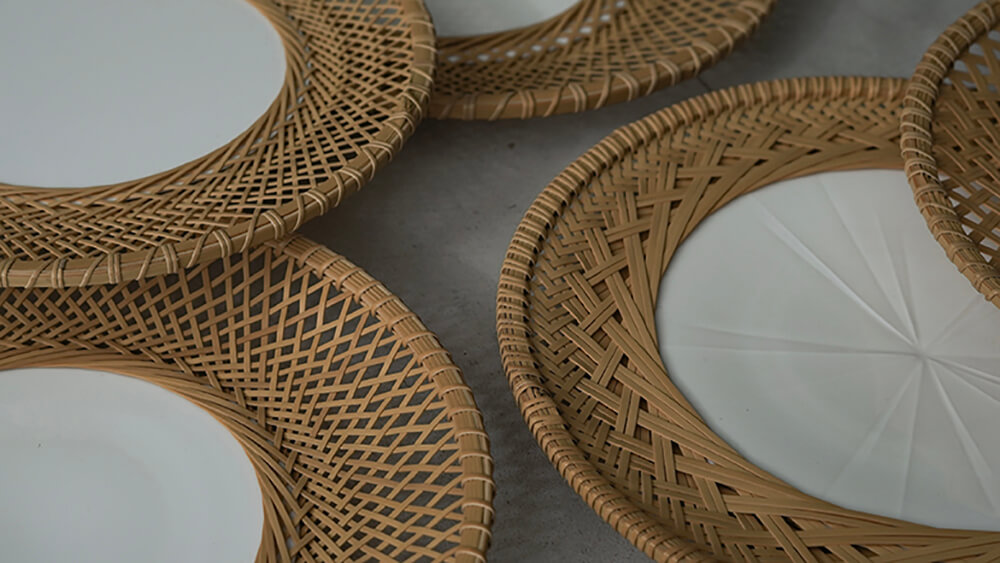
“Rinkou” is made of madake bamboo produced in Fukuoka Prefecture. Bamboo is a lightweight yet strong material with flexibility and toughness. It is also water-resistant, so when soiled, it can be washed in water and dried to maintain its durability over a long period of time.
However, bamboo is a time-consuming material to craft because each piece of bamboo is different in terms of softness, hardness, and bendability. Mr. Enomoto made numerous prototypes, down to the nearest 0.1 mm, to achieve a width and thickness of bamboo that is practical to use while maintaining delicacy. It is truly a meticulous craftsmanship woven by a craftsman!
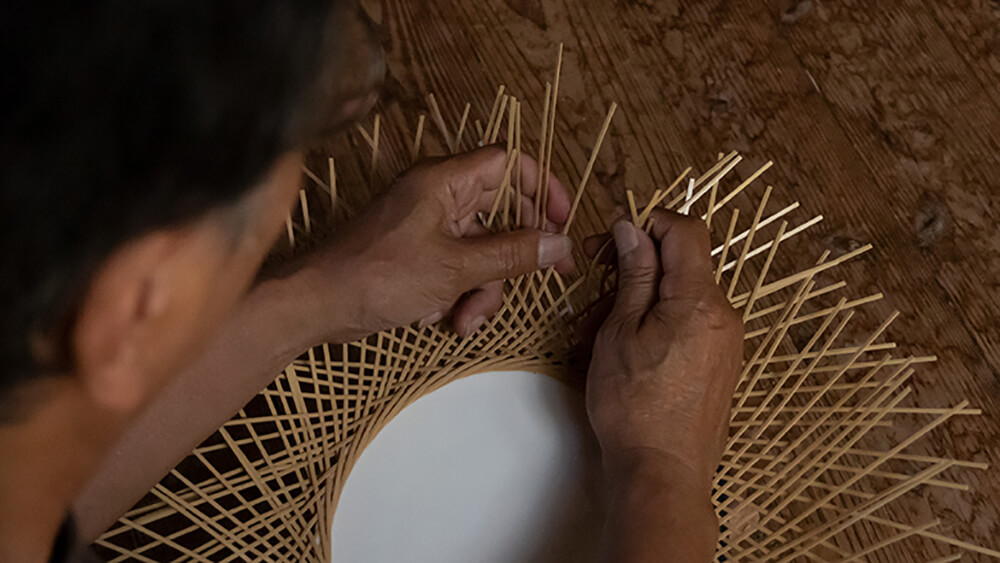
Wataru Sakuma of the Design Office was in charge of the development of NIKKO.
One of the features of NIKKO FINE BONE CHINA is its thinness, but we wanted to make it even thinner so that the joint surface with the bamboo would look beautiful. After a process of trial and error, we achieved an unprecedented thinness of the edge.
Then, by focusing on the balance between the fine texture of NIKKO FINE BONE CHINA and the rustic texture of bamboo, a product that is both beautiful and strong was completed.

The contrast of light and shadow overflowing from the carefully woven beautiful bamboo mesh and the transparency of NIKKO FINE BONE CHINA are a beautiful fusion! They bring out the best of each other’s materials.
The warmth and gentleness of the bamboo is added to the dignified and clean china. Please take one in your hands.
[Ceramic & Tin] SUZUHAKU Product Details
The second series of Material waves™ is a collaboration of ceramics and metal!
The name “Suzuhaku” was created by combining NIKKO FINE BONE CHINA and tin by Nousaku, a casting manufacturer founded in 1916 in Takaoka City, Toyama Prefecture. The name was derived from the sound “haku” in Japanese from the whiteness that is a characteristic of NIKKO FINE BONE CHINA and the foil used to finish the edge, and combined with the material tin (“Suzu” in Japanese).
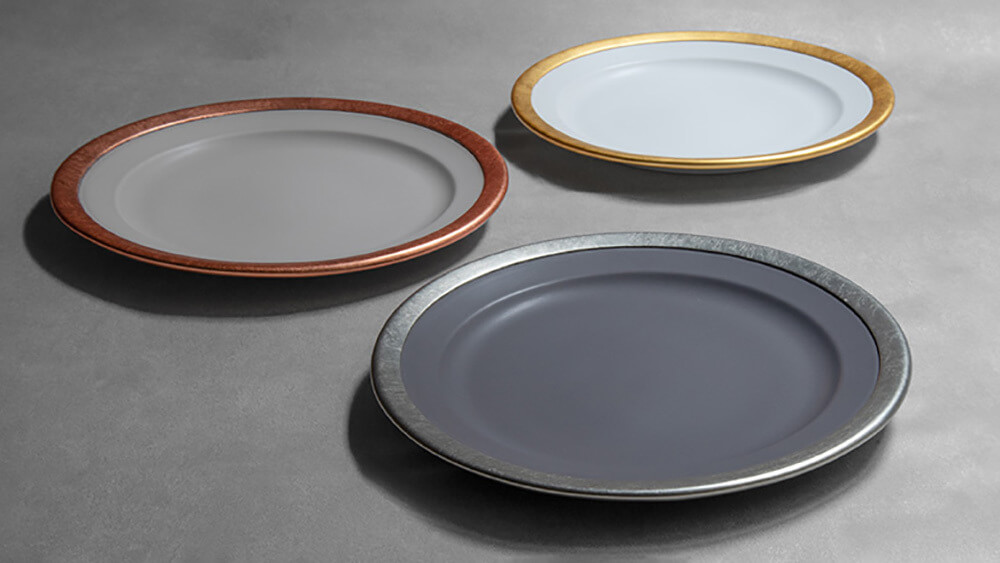
Generally, the most common damage to plates is chipping of the edges. Tin White was born from the idea of covering the edge with metal (tin) to make it stronger and to make it more durable so that it can be used with care for many years to come. The new technique of combining ceramics and metal (tin) has been established. We tend to think of plates as consumable items, but if the edge is less likely to chip, we can continue to use them carefully for a long time!
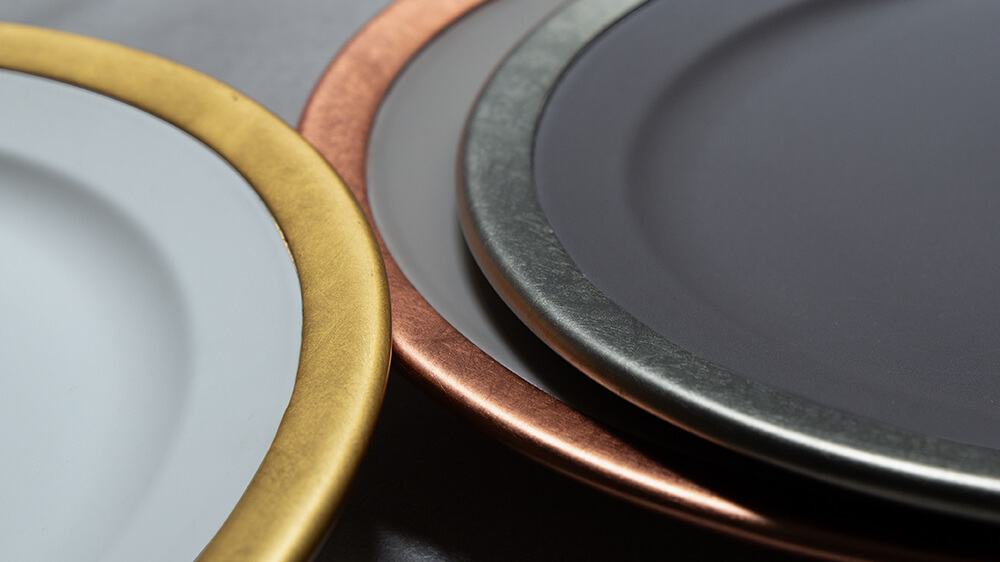
Tin used as a material is the most expensive metal next to gold and silver. It has antibacterial properties, such as not corroding water and being believed to mellow the flavor of sake, and has long been used as a material for tea and sake vessels. In addition, the tin on the rim of the tin white is coated with gold, copper, and tin foil and foil processing. This foil processing is handled by “Hakuichi”, a company based in Kanazawa City, Ishikawa Prefecture. The edge of the tin material, which is very soft despite being a metal, may be deformed by impact, but the charm of tin products is that such changes over time can be enjoyed for many years as part of their texture.
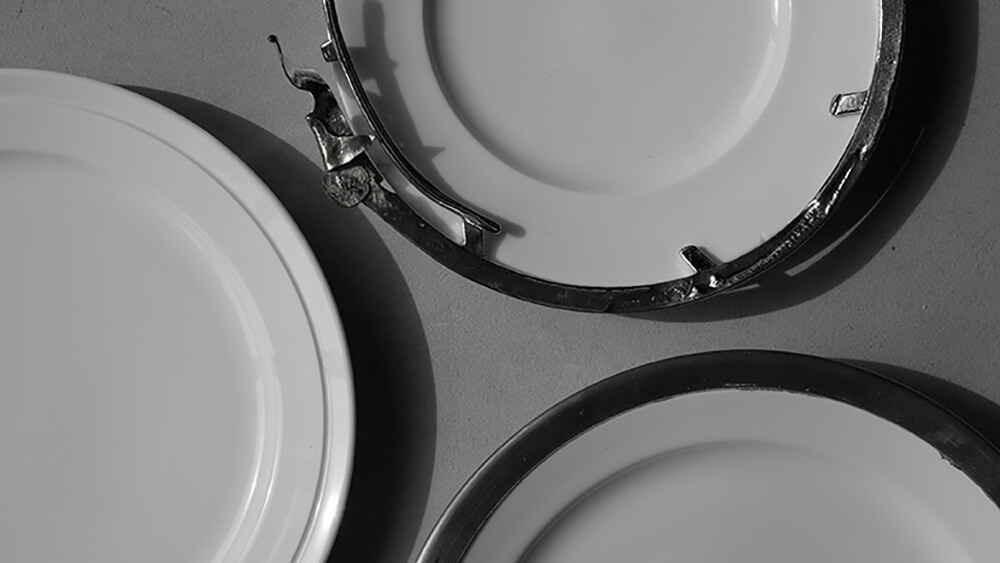
At Nousaku, we have repeatedly tried to combine NIKKO FINE BONE CHINA and 100% tin through a process of trial and error. In particular, the burr (protrusion or spike that occurs when the tin is removed from the mold. In Japanese, it is called “buri” or “kaeri”.) The surface treatment and the method of neatly finishing the border between the tin and the tableware were extremely difficult to achieve.
After about three years of planning, they finally arrived at the method of casting tin and pasting it together to achieve a beautiful finish.
The tin attached to the rim of the plate is made using a traditional casting method in Takaoka City, Toyama Prefecture, called the raw mold casting method. Because the molds are not fired or treated with chemicals, the sand can be easily reused and the process is highly mass-producible.
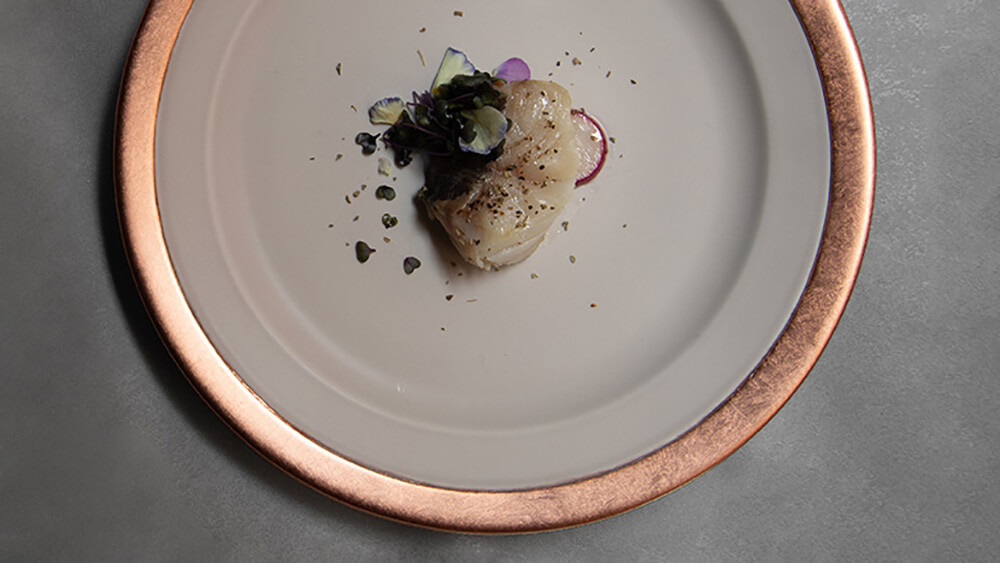
The collaboration between ceramics and tin was so difficult that it took many years to develop. The one-of-a-kind beauty created by the combination of different materials is the result of the combined technological capabilities of the two materials! Another appeal of “Suzuhaku” is that the edge of the tin will change over time as it is used, and you can enjoy this change.
Expectations are high for future collaborations!
“Material Waves™” is a collaboration of ceramics and different materials. I was captivated by the new sensation of beautiful tableware I had never seen before. The story behind the development of this product was also interesting, and I was impressed once again by the traditional techniques that exist in Japan.
The goal of “Material Waves™” is to preserve the handcrafts and traditions of local industries and craftspeople by creating new products by combining different materials and continuously disseminating them, transcending the boundaries between crafts and industrial products.
What different materials will we collaborate with in the future? I, Hakoboya, am really looking forward to it!!|ᴗ·)╯
You should all be waiting in anticipation, too.
For the official Material Waves™ website, click here
https://www.nikko-tabletop.jp/pages/material-waves


